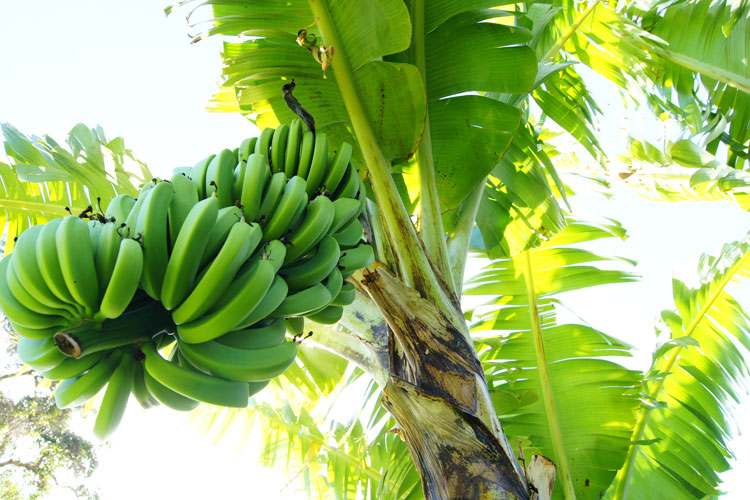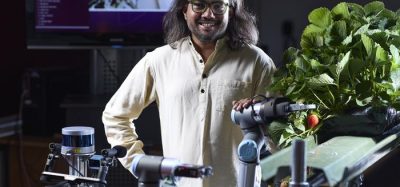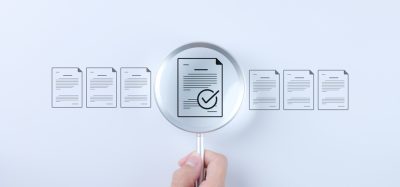A model solution for saving bananas
- Like
- Digg
- Del
- Tumblr
- VKontakte
- Buffer
- Love This
- Odnoklassniki
- Meneame
- Blogger
- Amazon
- Yahoo Mail
- Gmail
- AOL
- Newsvine
- HackerNews
- Evernote
- MySpace
- Mail.ru
- Viadeo
- Line
- Comments
- Yummly
- SMS
- Viber
- Telegram
- Subscribe
- Skype
- Facebook Messenger
- Kakao
- LiveJournal
- Yammer
- Edgar
- Fintel
- Mix
- Instapaper
- Copy Link
Posted: 26 October 2020 | Mandy Parrett (New Food) | No comments yet
Researchers have developed an innovative solution for quickly identifying diseased banana crops, enabling them to be tackled before they take hold or spread.


Bananas are a primary food source in many regions of Africa, with small-scale farmers depending on their cultivation for food and a source of income. However, continual environmental alteration due to climate change and land-use change has seen an increase in the inheritance and spread of serious diseases, fungal infections and viruses; most with devastating effects.
New research conducted in the Democratic Republic of Congo and Republic of Benin, shows how a combination of imagery from mobile phones, drones and satellites can be used to identify and tackle numerous forms of banana crop disease. The images captured have varying resolutions and are fed into a platform that has been “trained” through machine learning to identify banana crops.
Case studies have demonstrated successful analysis of threats to banana crops with 97 percent overall accuracy – a significant benefit for the 90 million people in East, West and Central Africa who rely on bananas and plantains as a primary food source.
There are six major and devastating threats to banana crops, among them bunchy top disease (BBTD) and Xanthomonas wilt of banana (BXW).
Commenting on the need for more advanced warning of diseases, Michael Gomez Selvaraj, a crop physiologist and co-author at the Alliance of Bioversity International and the International Center for Tropical Agriculture (CIAT), said: “Threats are currently detected by experts in the field using cell phones. But to track and detect diseases across huge tracts of land at country, district or village level, you need a platform that quickly detects threats.”
Using a pixel-based classification system, the researchers initially trained the model to detect banana plants on mixed-farm systems, where smallholder farmers grow numerous crops on a single area of land. After ‘learning’ the patterns and algorithms for detecting banana plants, the researchers then trained the platform to analyse physical symptoms of the six diseases, as well as ascertain a percentage threat.
Information about the severity of the specific threat and its spread can be sent to organisations or government authorities who can then take immediate remedial action. “Otherwise, potential threats multiply quickly; for example, farmers may give infected crop stems to others, and, in the case of a virus, spread it around the country or district without knowing until it’s too late,” said Selvaraj.
“We can now detect six major banana threats with speed and accuracy with our Tumaini mobile phone app,” said Selvaraj. The database is free for farmers, organisations and governments to use, and has been downloaded from the Google App store 2,500 times.
“The next step is to find financial support to bring more partners together, so we can track more data over a wider area. The hope is to cover Africa, India, Australia and Latin America where bananas are a major crop and these threats are looming,” he added.
Graham Thiele, the Director of the CGIAR Research Program on Roots, Tubers and Bananas, said: “We congratulate the team on this breakthrough research. It validates the use of aerial images for disease detection, potentially transforming our ability to assess threat impact.”
This same technology could enable detection of other diseases or threats to other crops where symptoms are visible; holding potential for crop security and preventing huge losses for many farmers across the world.
The findings were published in the ISPRS Journal of Photogrammetry and Remote Sensing.
Related topics
Environment, Equipment, Food Security, Research & development, Technology & Innovation
Related organisations
Alliance of Bioversity International and CIAT, CGIAR Research Program on Roots Tubers and Bananas









